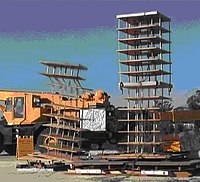
Photo from wikipedia
Hysteretic energy dissipation is often employed as a measure of performance for systems subjected to earthquake excitation. This mainly stems from quasi-static cyclic tests where fuller hysteresis loops (i.e., higher… Click to show full abstract
Hysteretic energy dissipation is often employed as a measure of performance for systems subjected to earthquake excitation. This mainly stems from quasi-static cyclic tests where fuller hysteresis loops (i.e., higher energy absorption) are taken to indicate better performance when comparing systems with similar strength under the same cyclic loading protocol. However, seismic loading offers a different proving ground, where energy absorption is strongly correlated with energy input, while the nonstationary loads imply that the beneficial hysteretic effects observed in a cyclic test may never be realized. Given the current state of art in models and methods of performance-based earthquake engineering, we ask whether earthquake records at a given seismic intensity will cause peak/residual displacements or accelerations that favor models having fuller hysteresis. Using incremental dynamic analysis on story-level oscillators with varying hysteretic characteristics, it is demonstrated that hysteretic energy dissipation does not consistently correlate with seismic performance.
Journal Title: Earthquake Spectra
Year Published: 2018
Link to full text (if available)
Share on Social Media: Sign Up to like & get
recommendations!